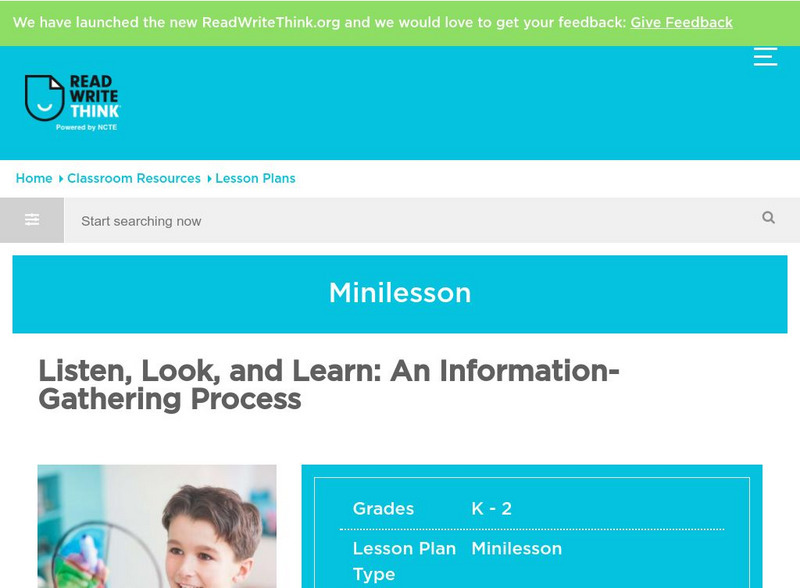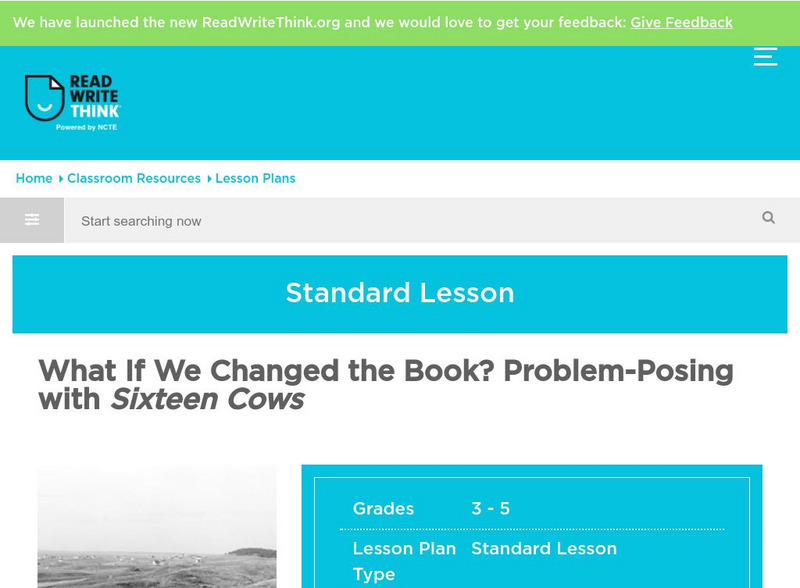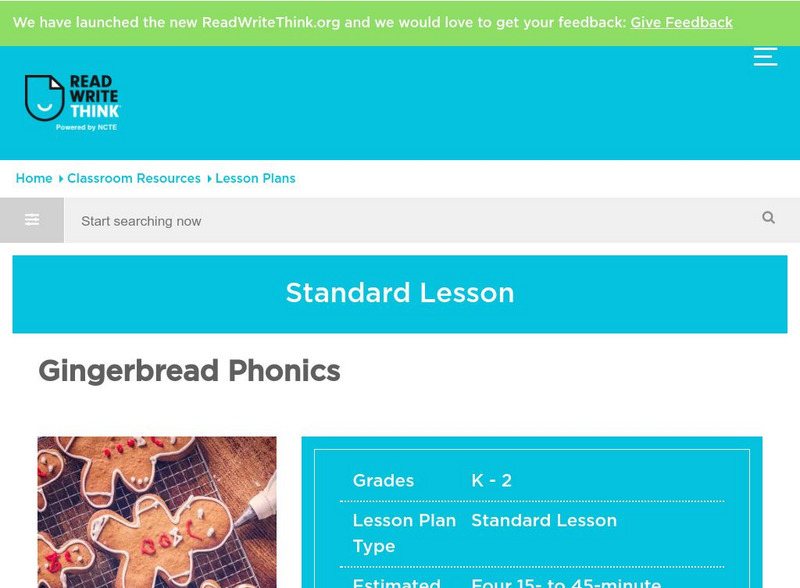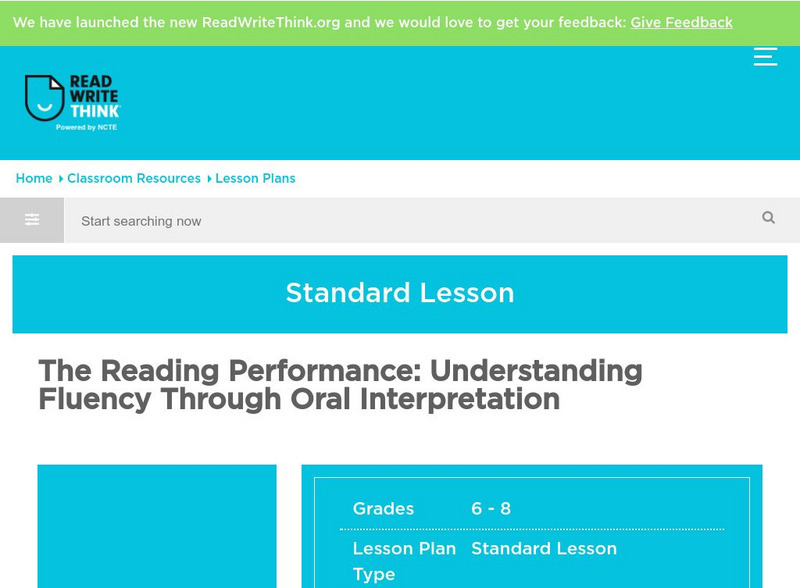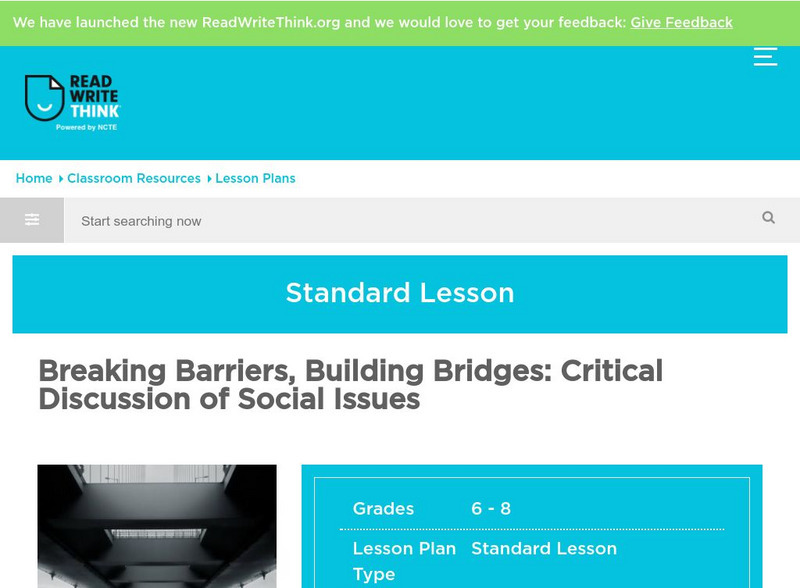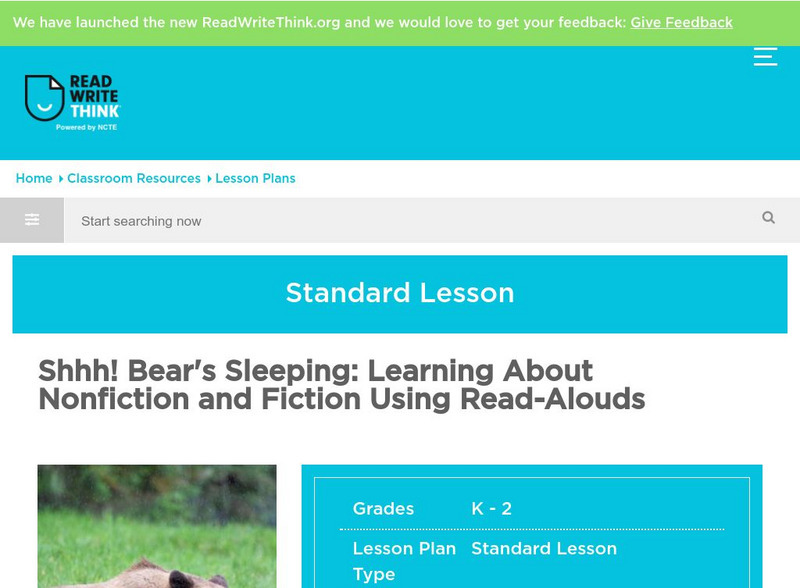Hi, what do you want to do?
ReadWriteThink
Read Write Think: Listen, Look, and Learn: An Information Gathering Process
This lesson models an information-gathering process for primary learners as they listen to and look at resources, seeking information pertinent to the questions on an information wheel. Guiding the listening, looking, and learning...
ReadWriteThink
Read Write Think: What if We Changed the Book? Problem Posing With Sixteen Cows
After reading a piece of math-related children's literature aloud, students pose and solve new problems by asking what-if questions about the events in the story.
ReadWriteThink
Read Write Think: Gingerbread Phonics
Through a shared reading of the familiar text, "The Gingerbread Man," students can learn to sound out familiar words. You will find step-by-step instructions as well as supplemental materials.
ReadWriteThink
Read Write Think: Lesson Plan: Reading Fluency Through Oral Interpretation
An online lesson for middle school students concerning learning reading fluency through oral interpretation. Students read poetry aloud in presentation-form and work together at interpreting the poem, increasing understanding of meaning...
ReadWriteThink
Read Write Think: Breaking Barriers: Critical Discussion of Social Issues
Through a series of picture book read-alouds and journal entries, students engage in critical discussion of complex issues of race, class, and gender.
ReadWriteThink
Read Write Think: Shhh! Bear's Sleeping: Learning About Nonfiction and Fiction
Students explore the distinction between the fiction story Bear Snores On and the nonfiction book Every Autumn Comes the Bear.
Utah Education Network
Uen: I'm So Bright! I Wear My Shades Indoors!
This instructional activity engages students in learning about light through multiple sources. Students will learn how light is produced, reflected, refracted, and separated. Students will communicate their findings through an...





